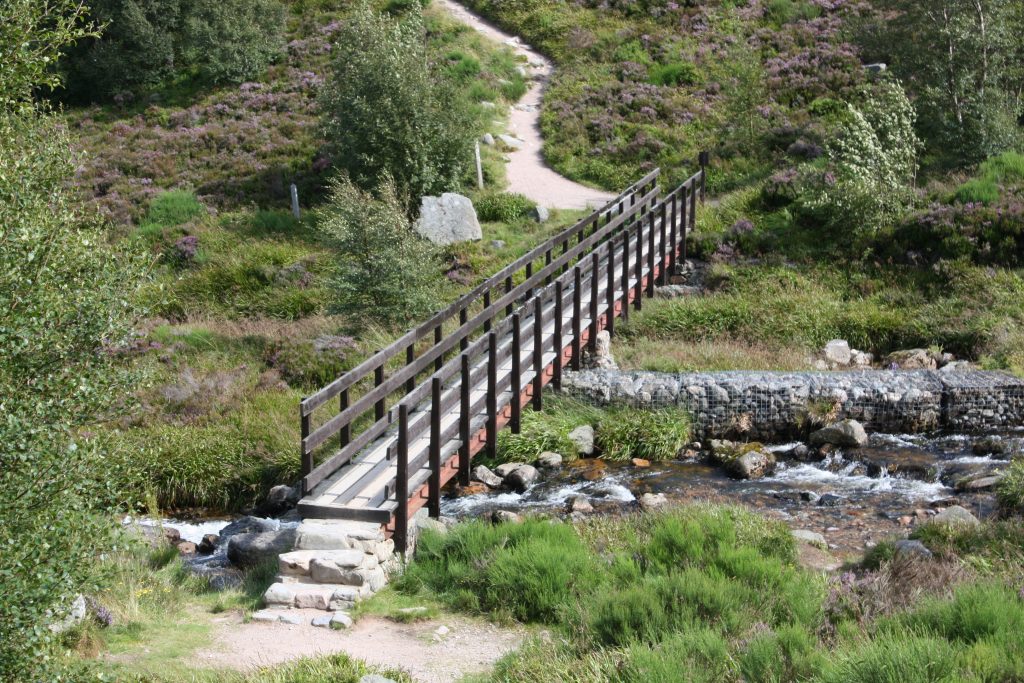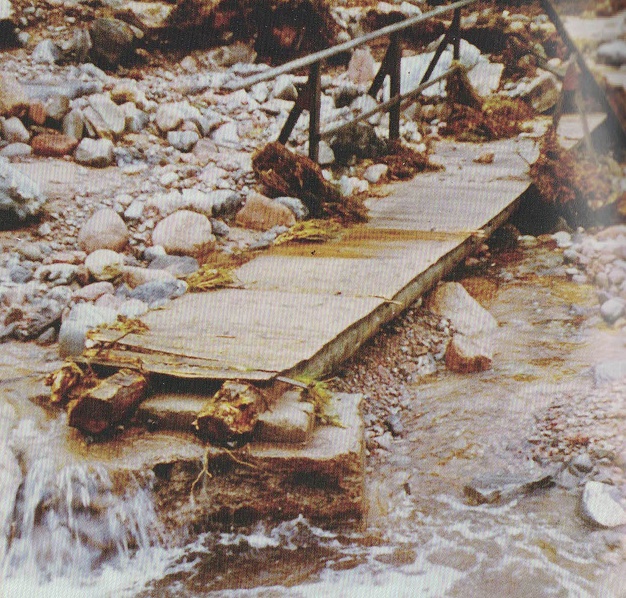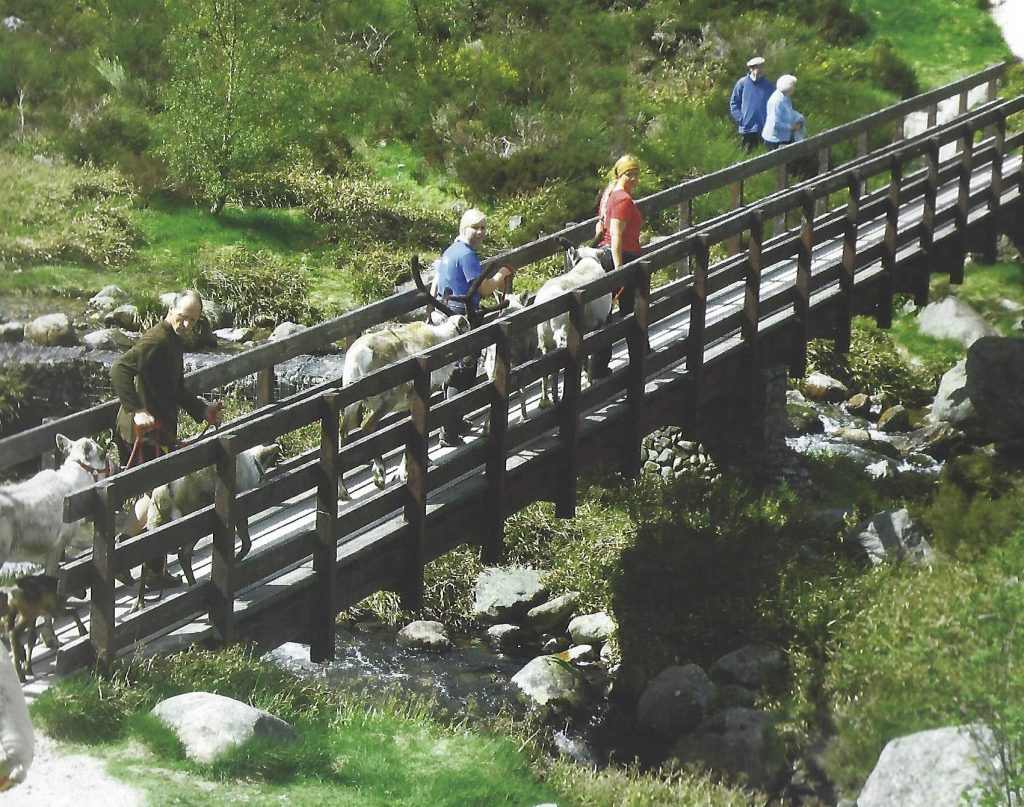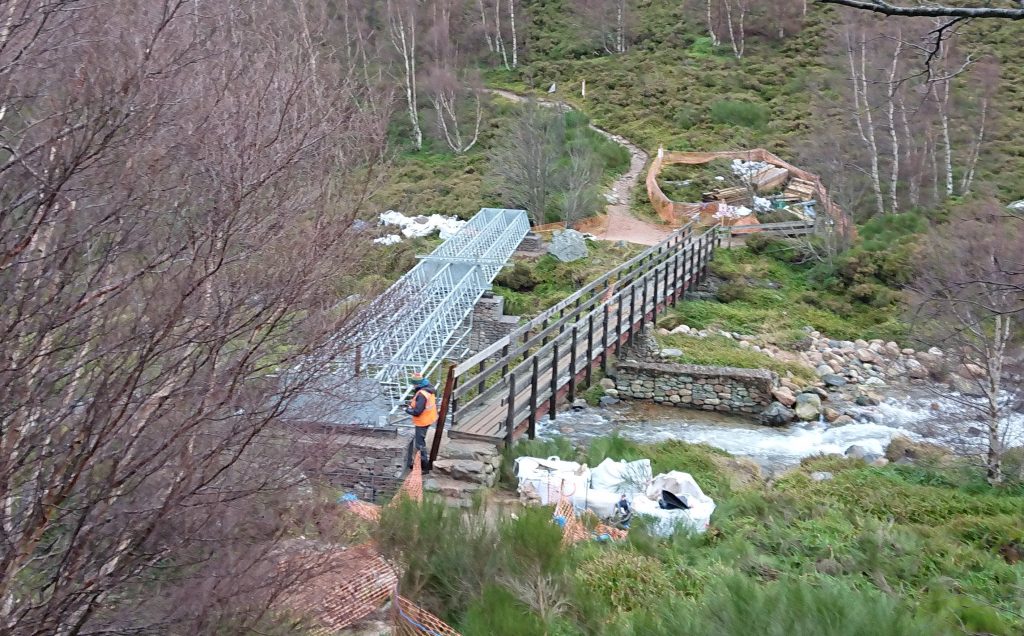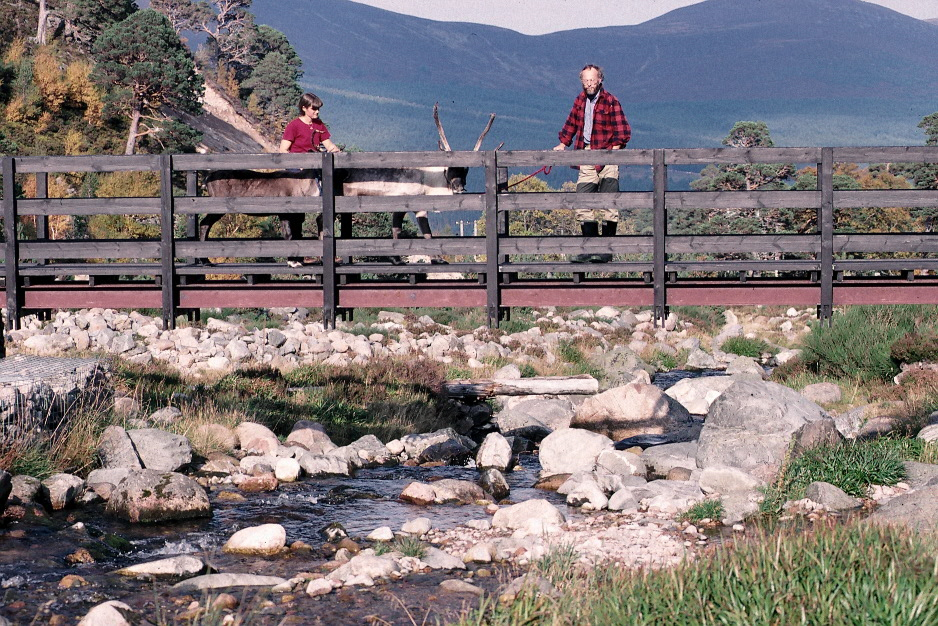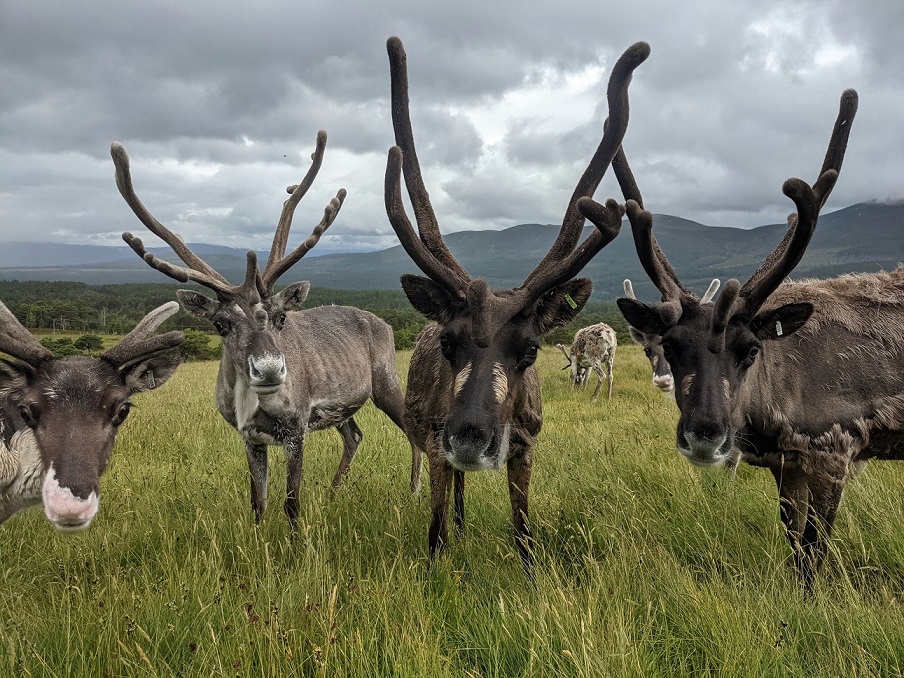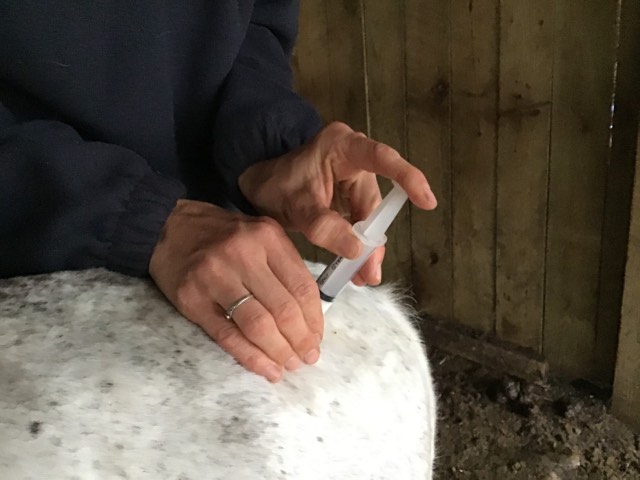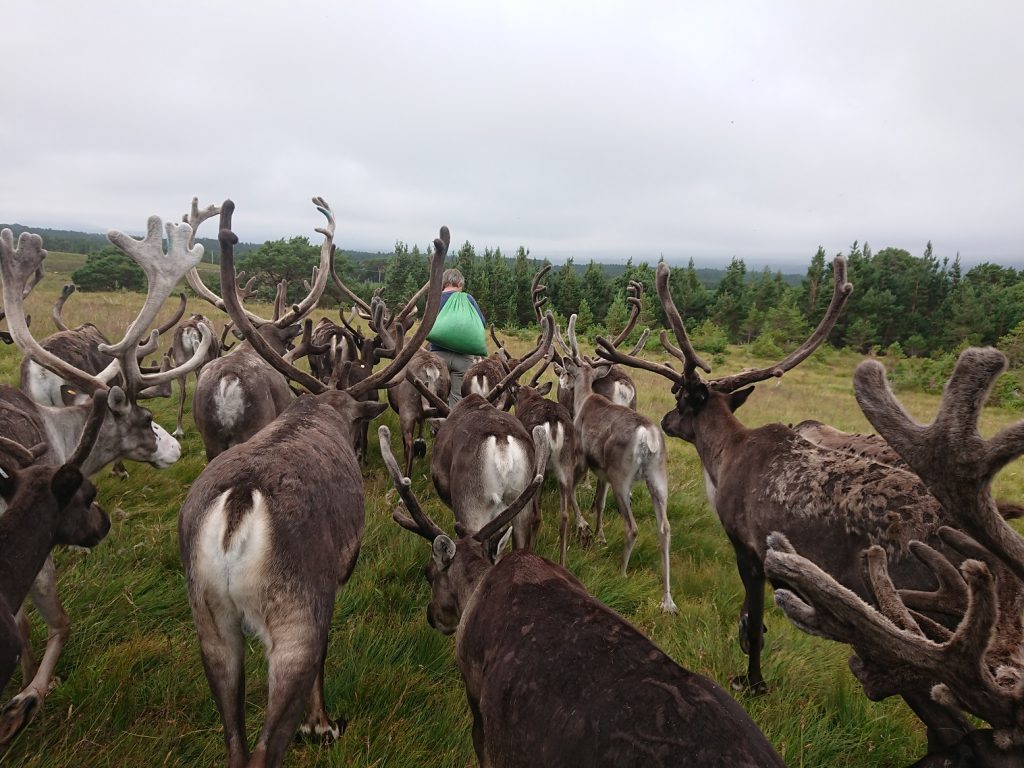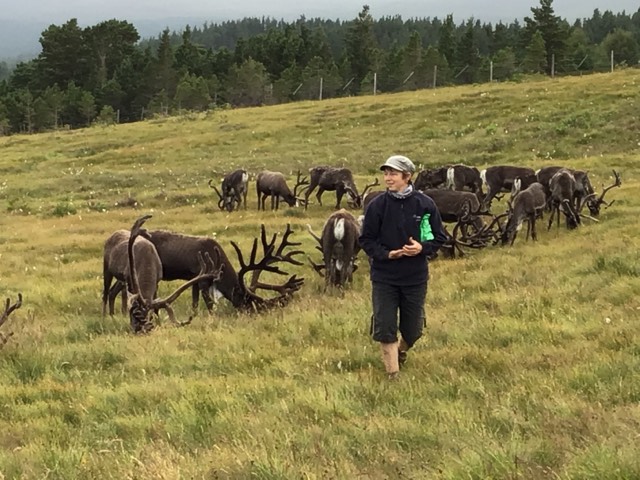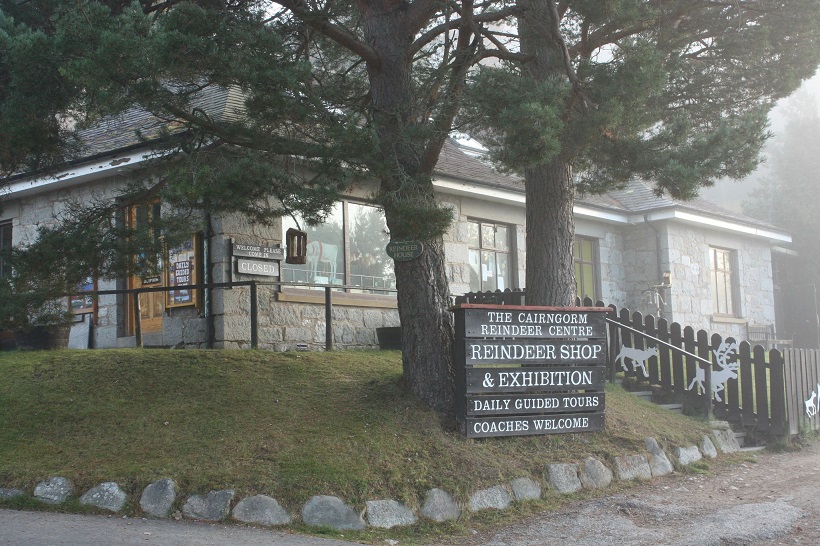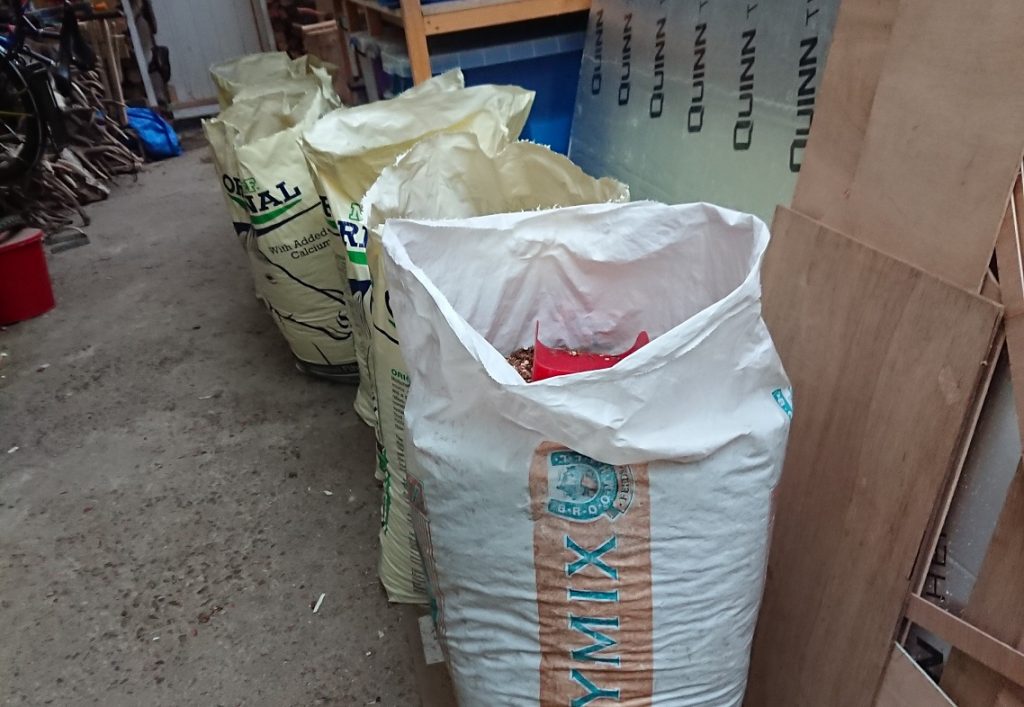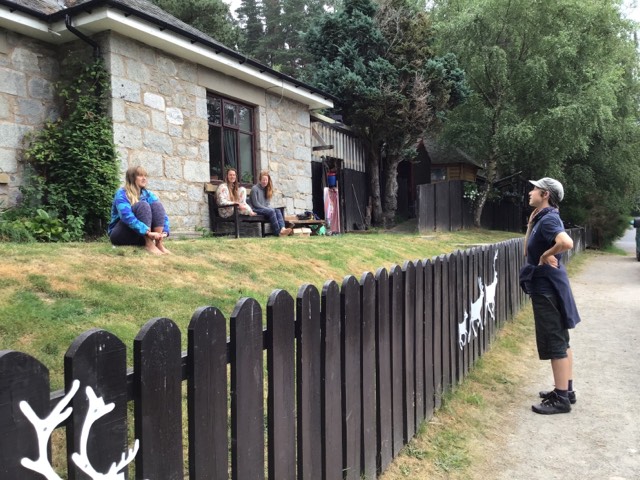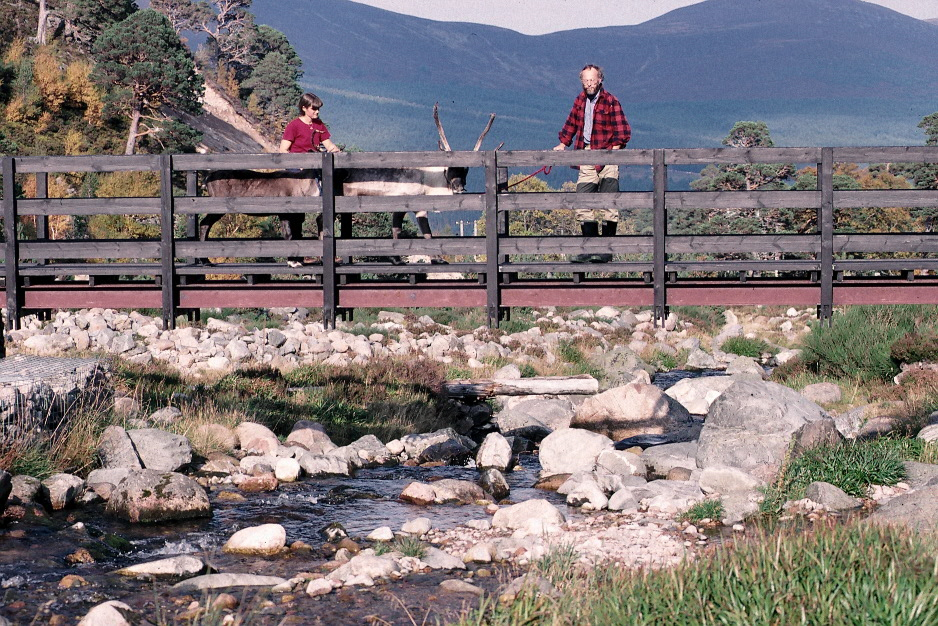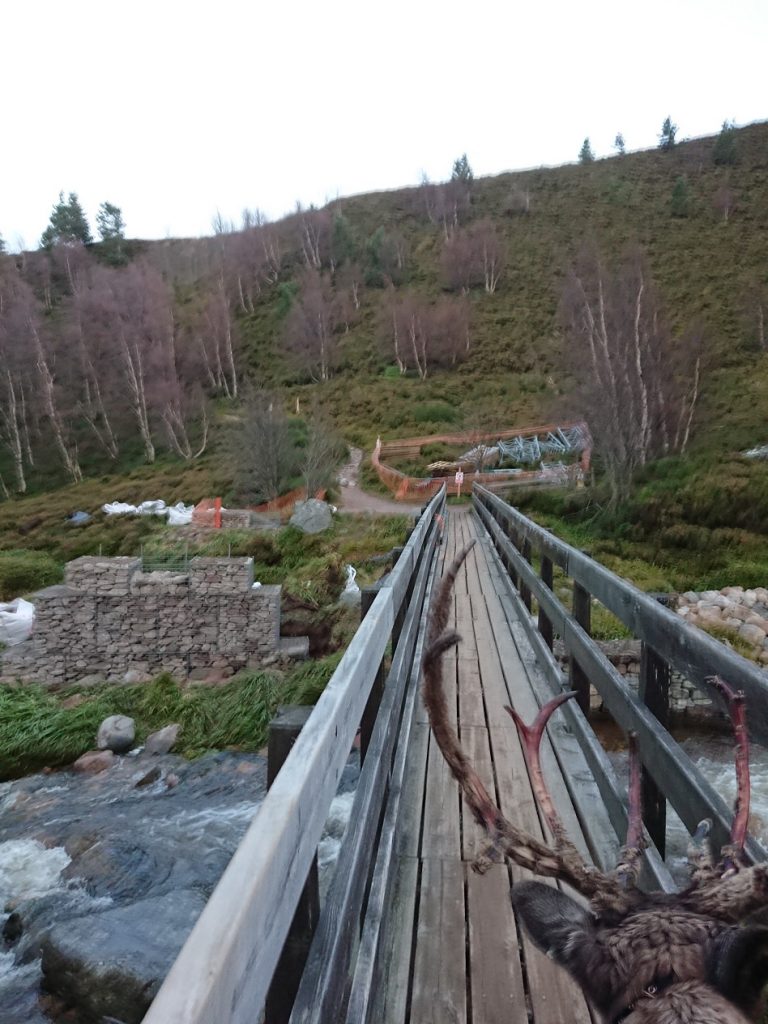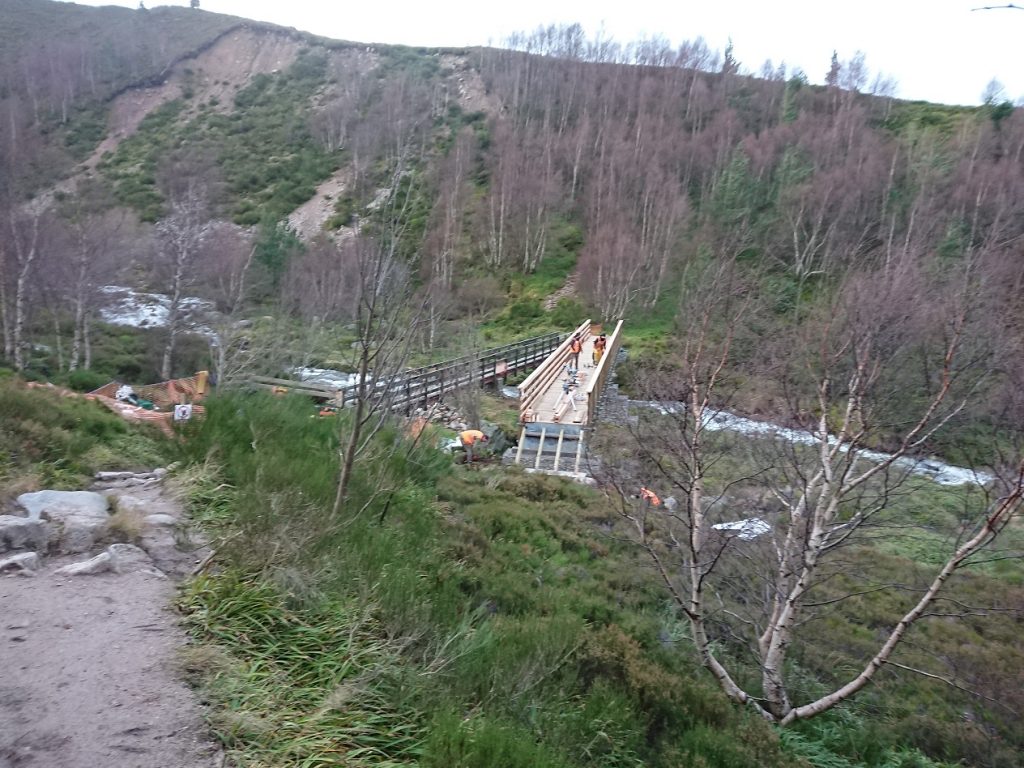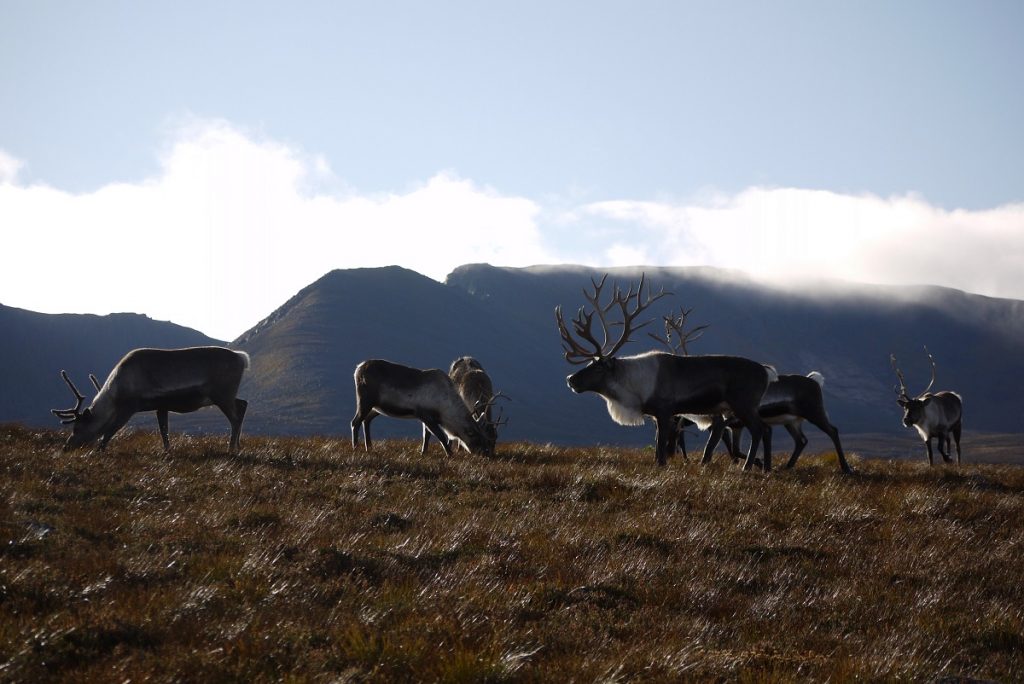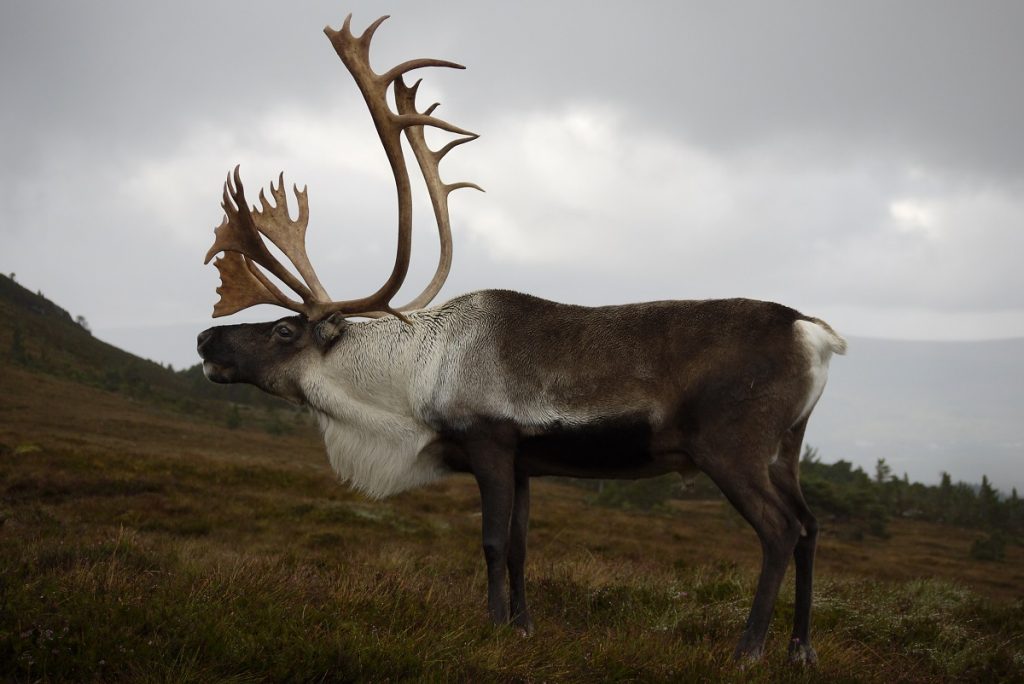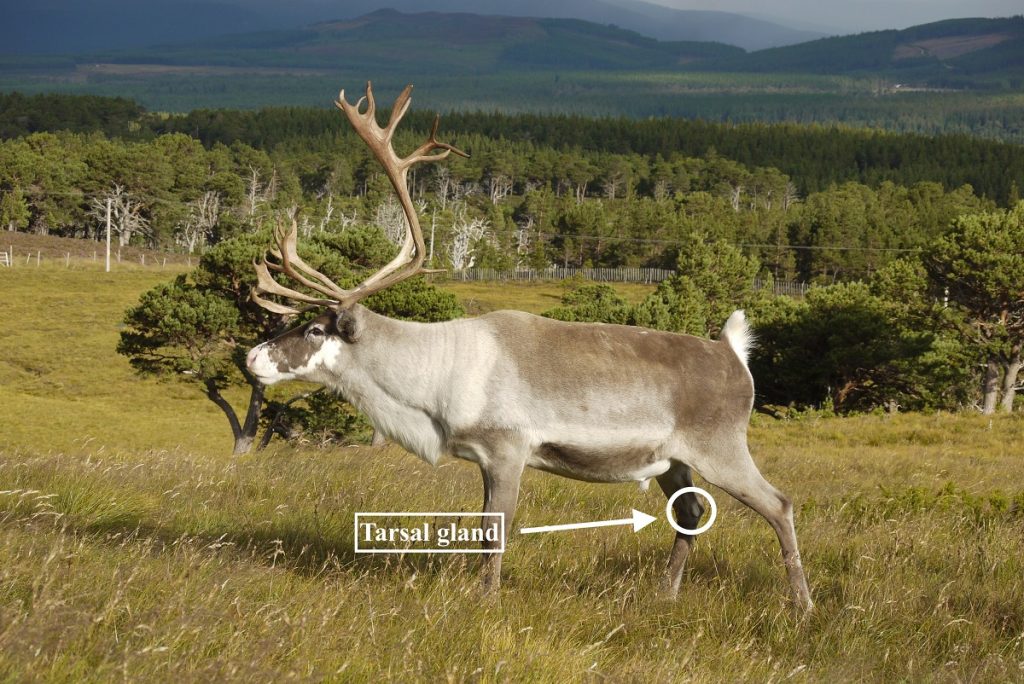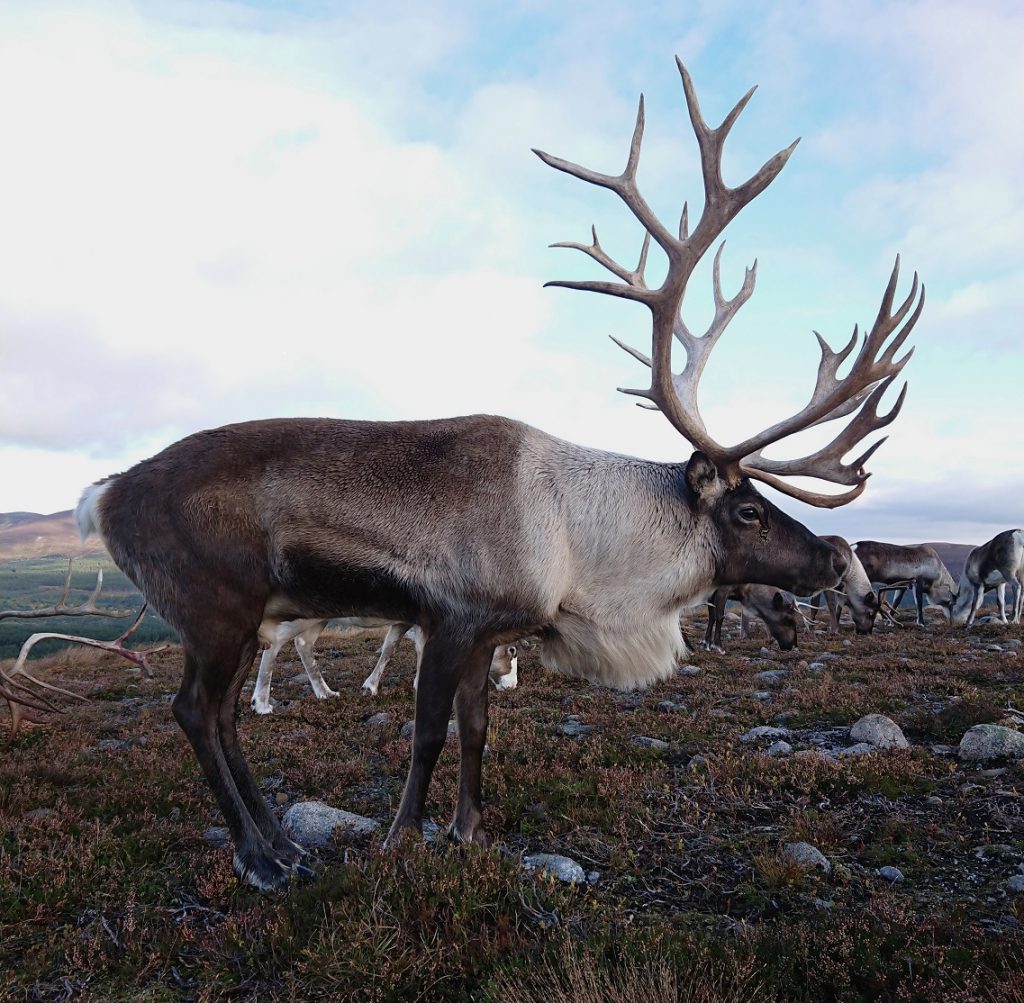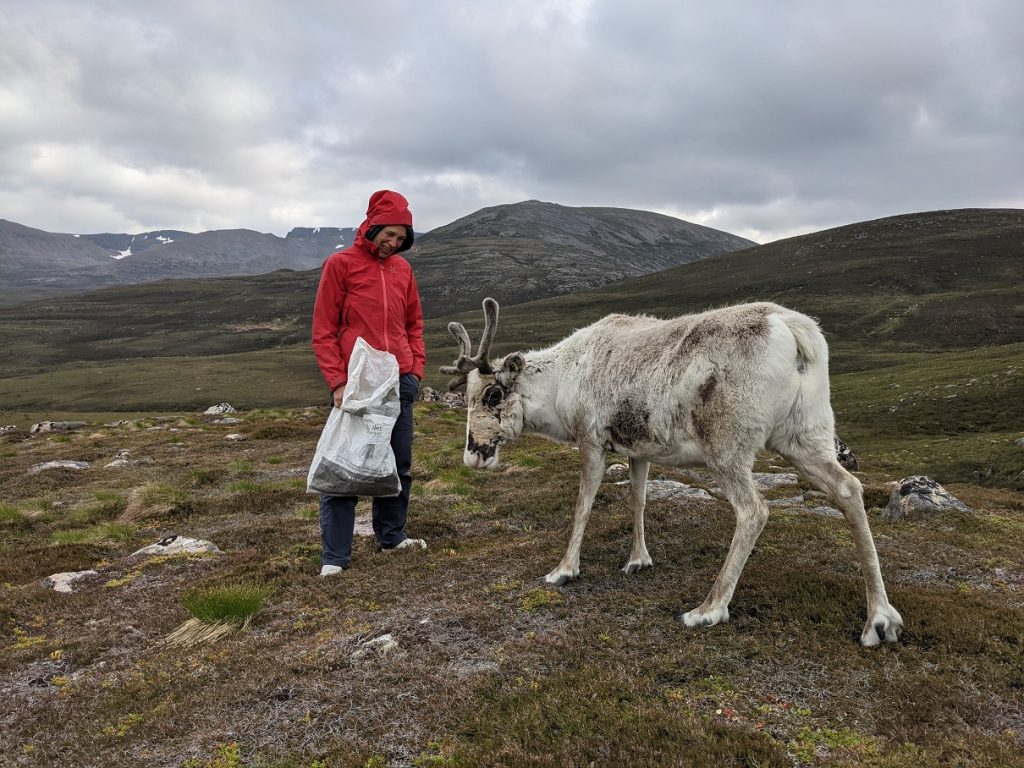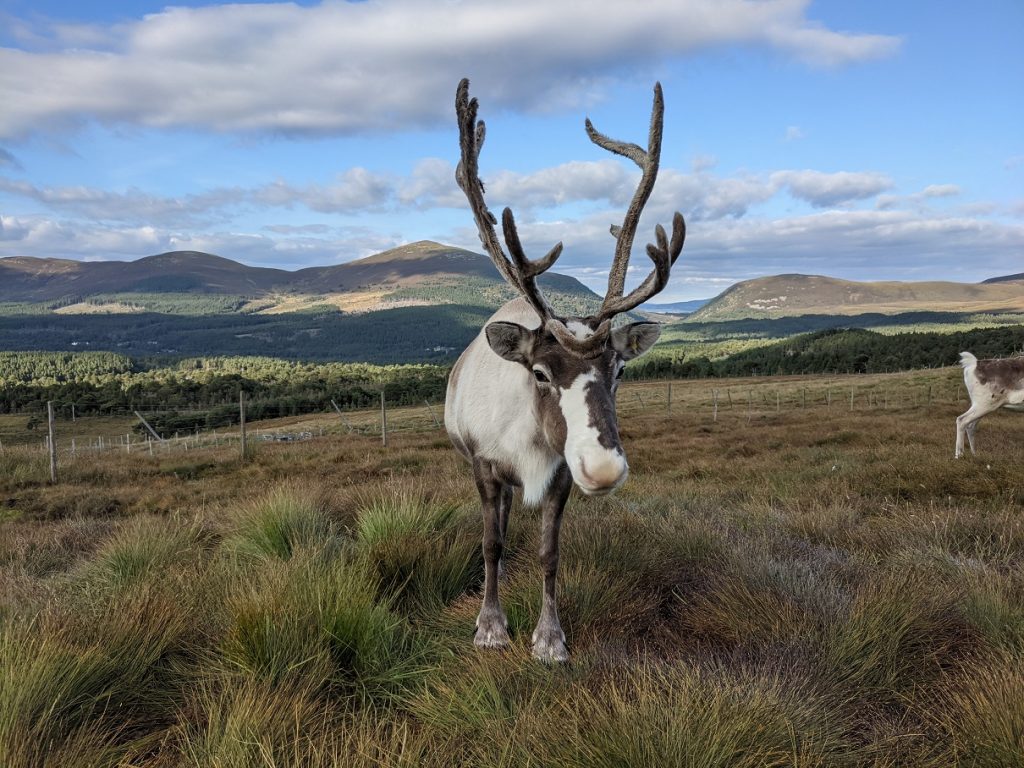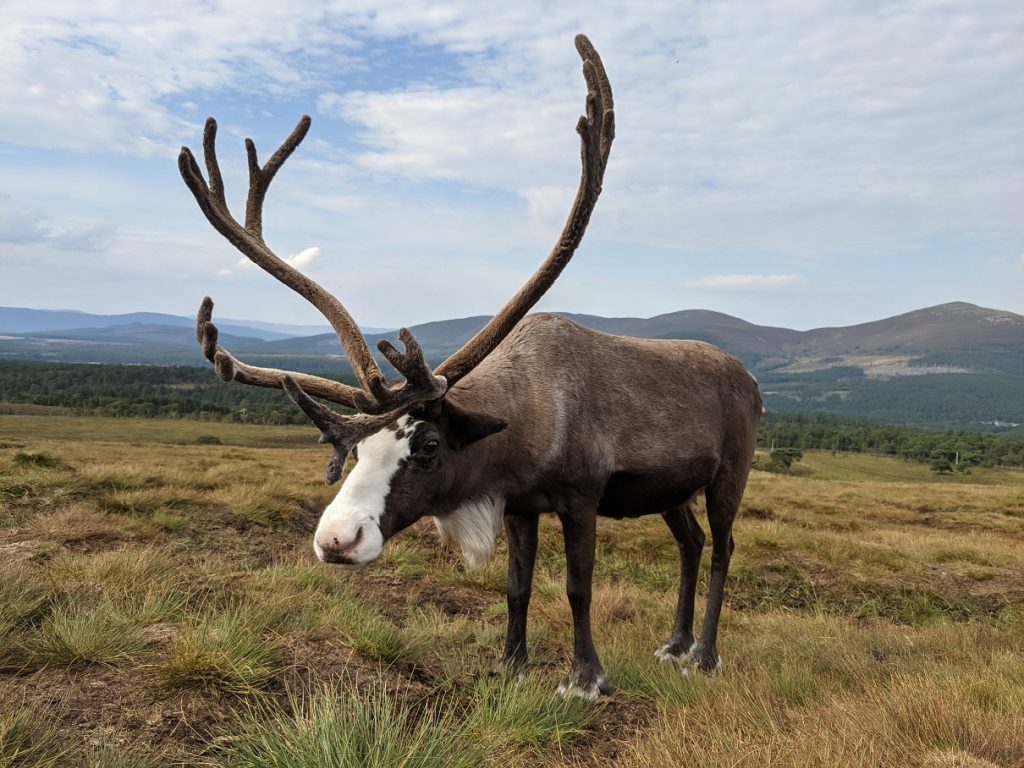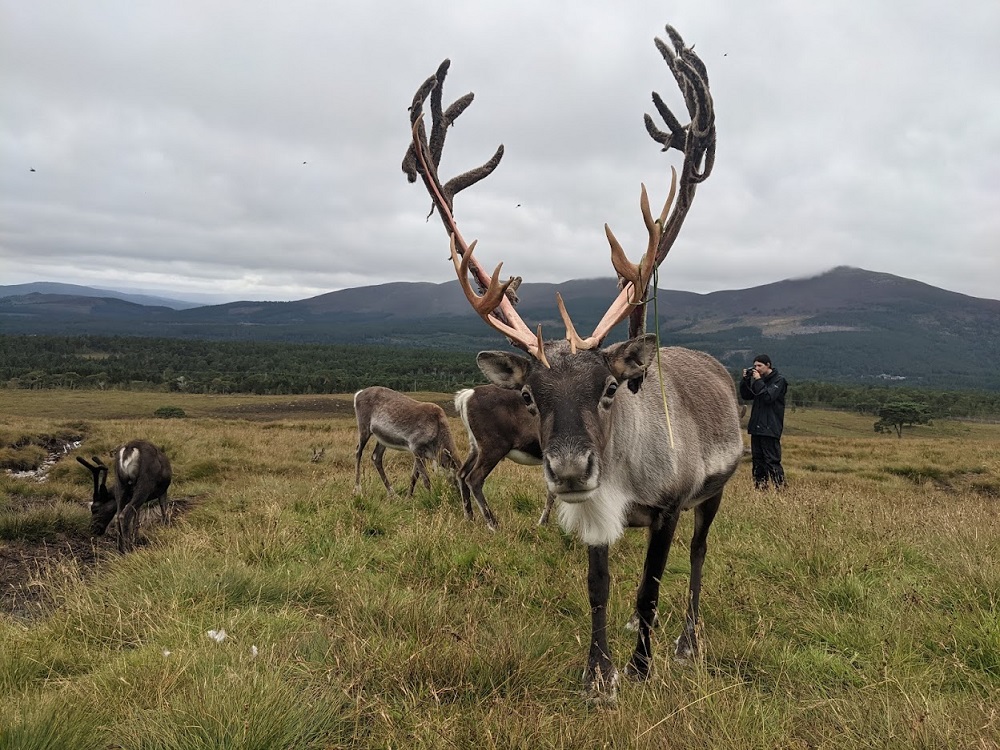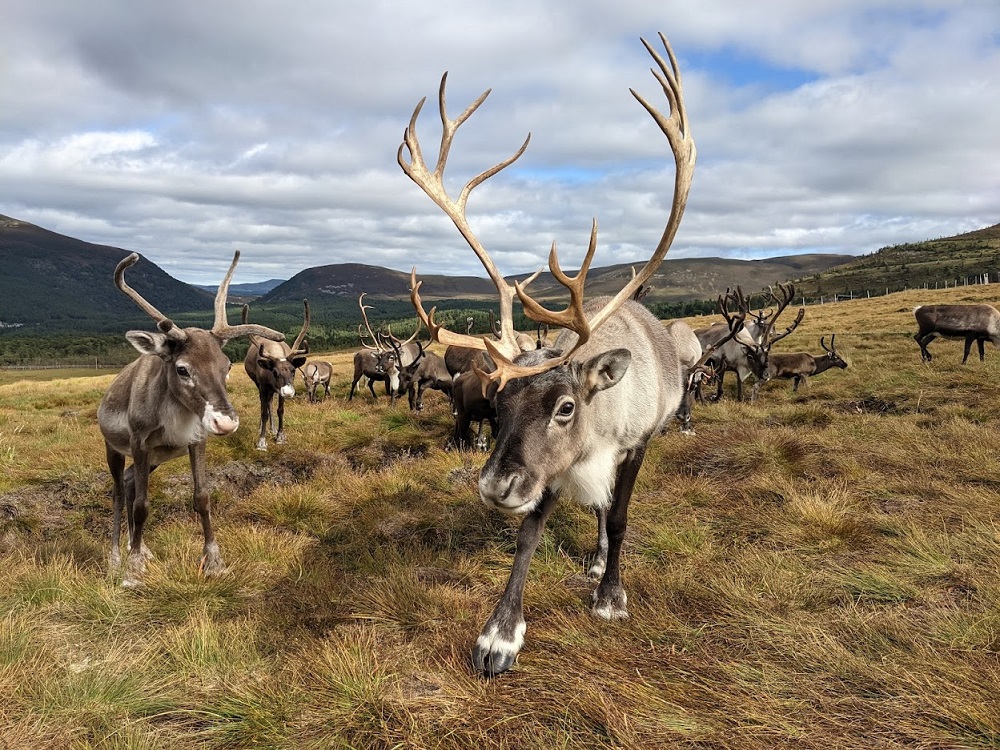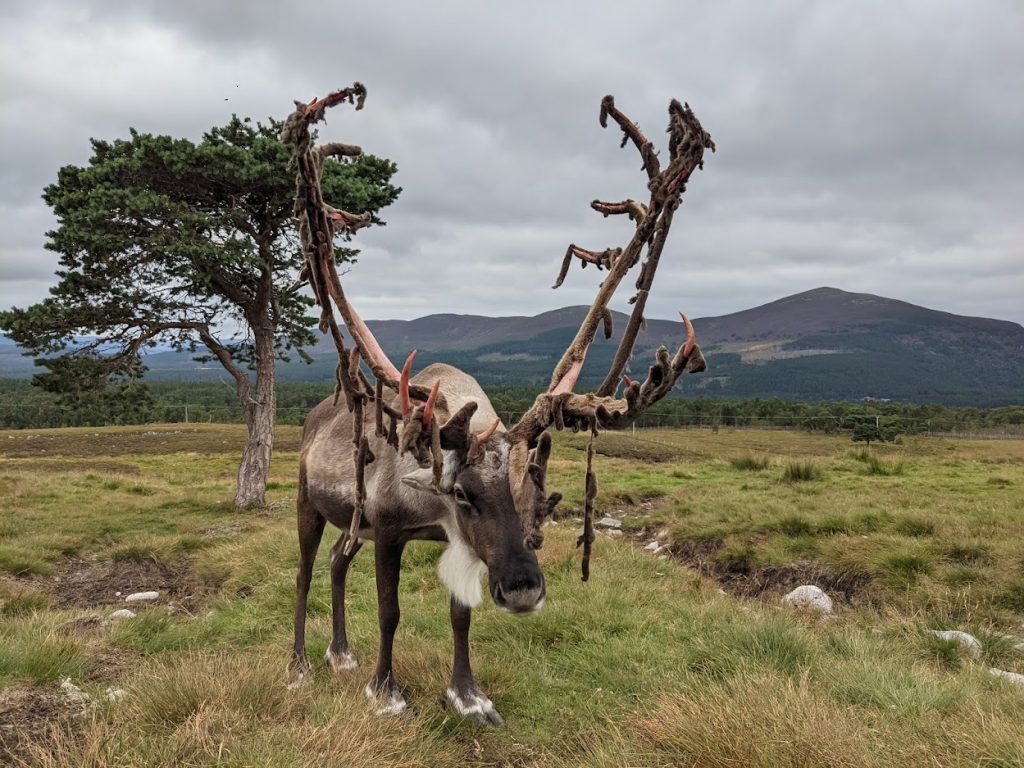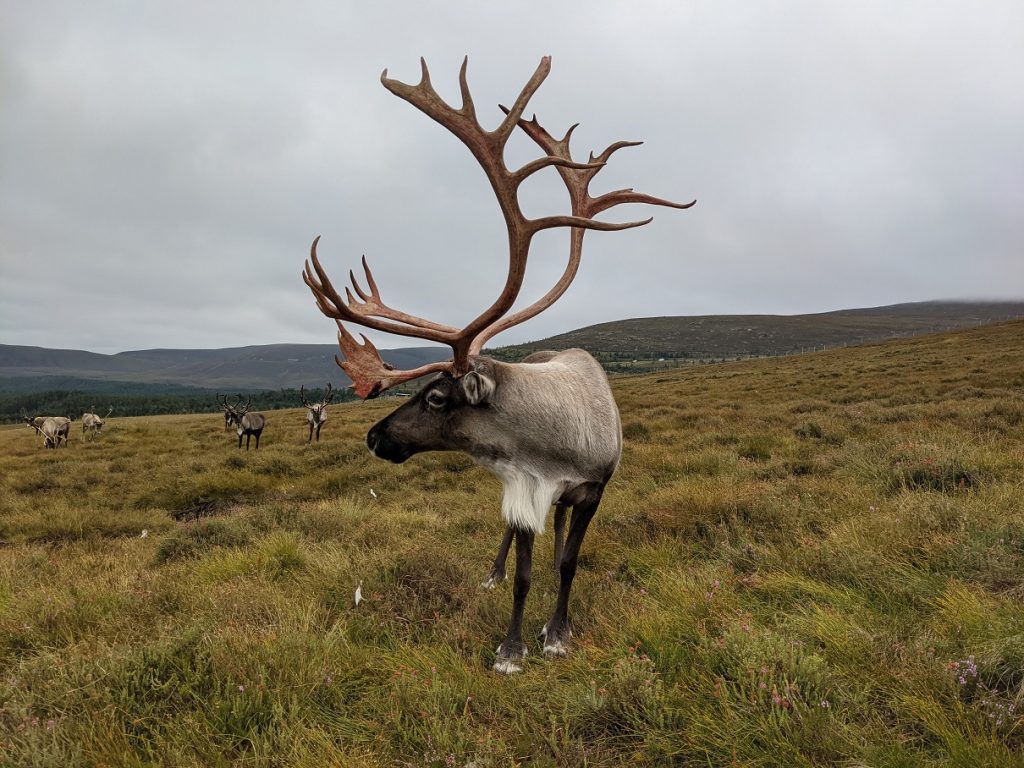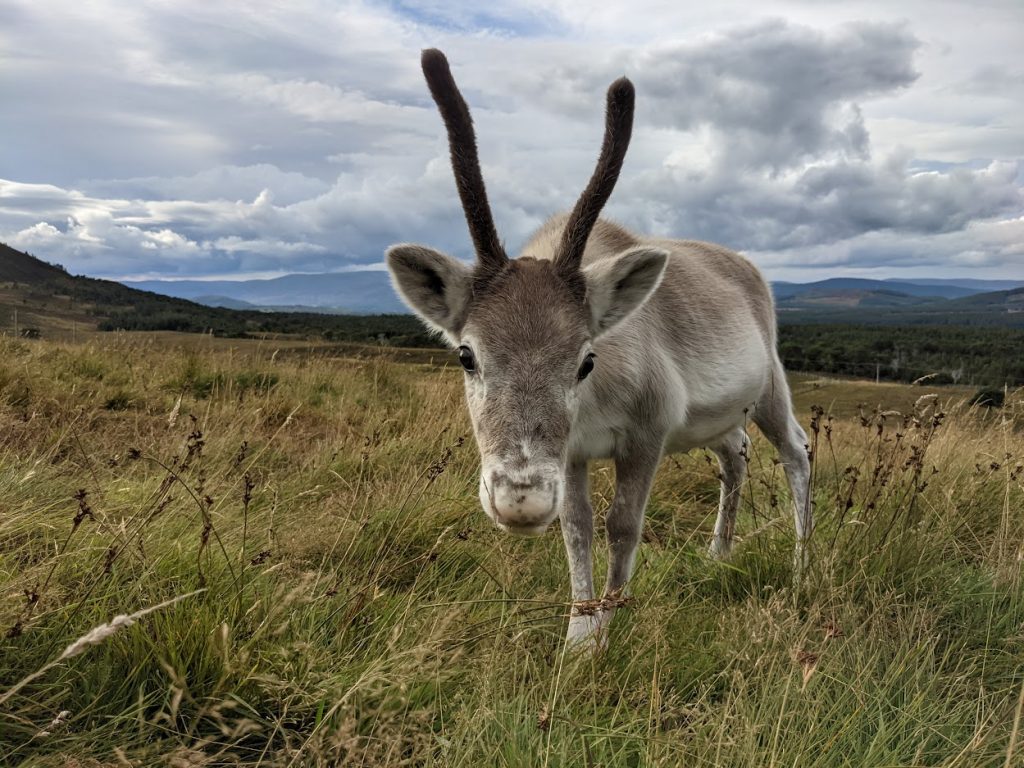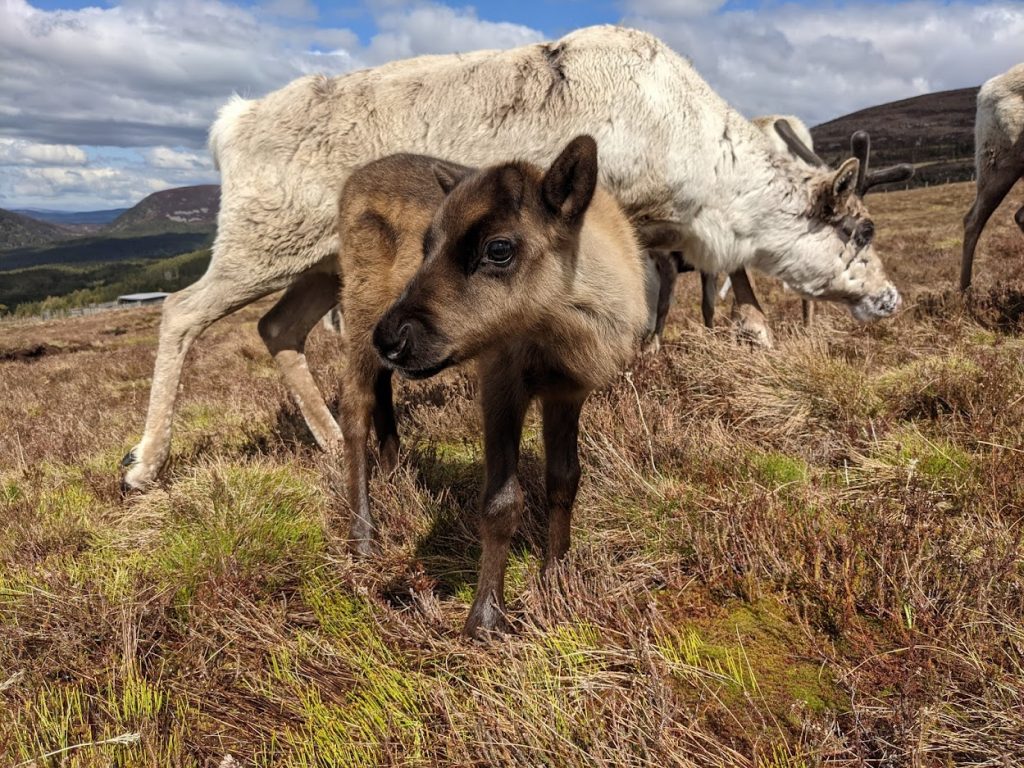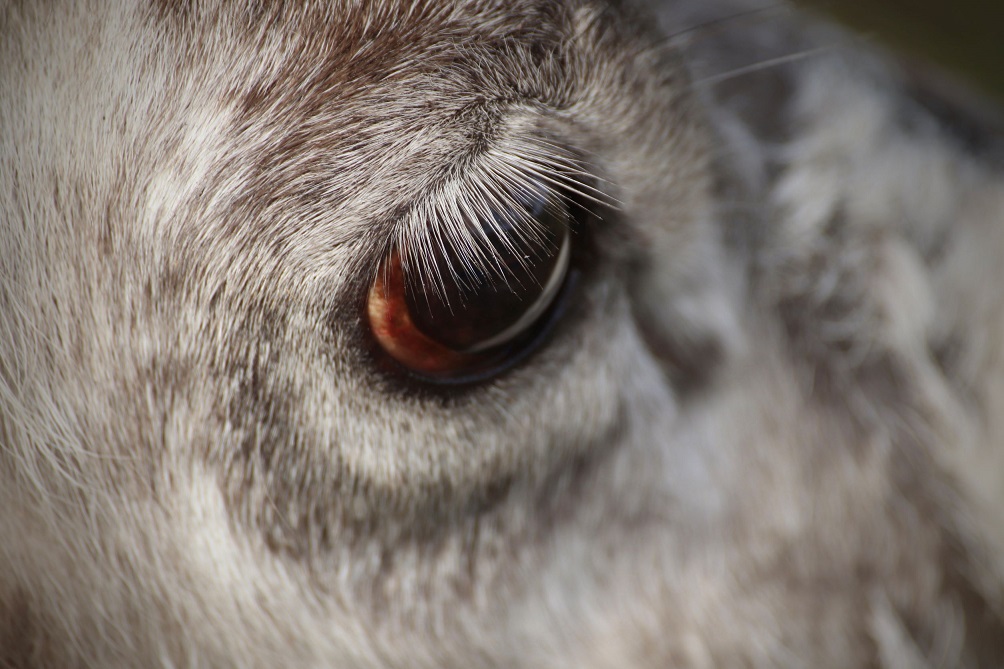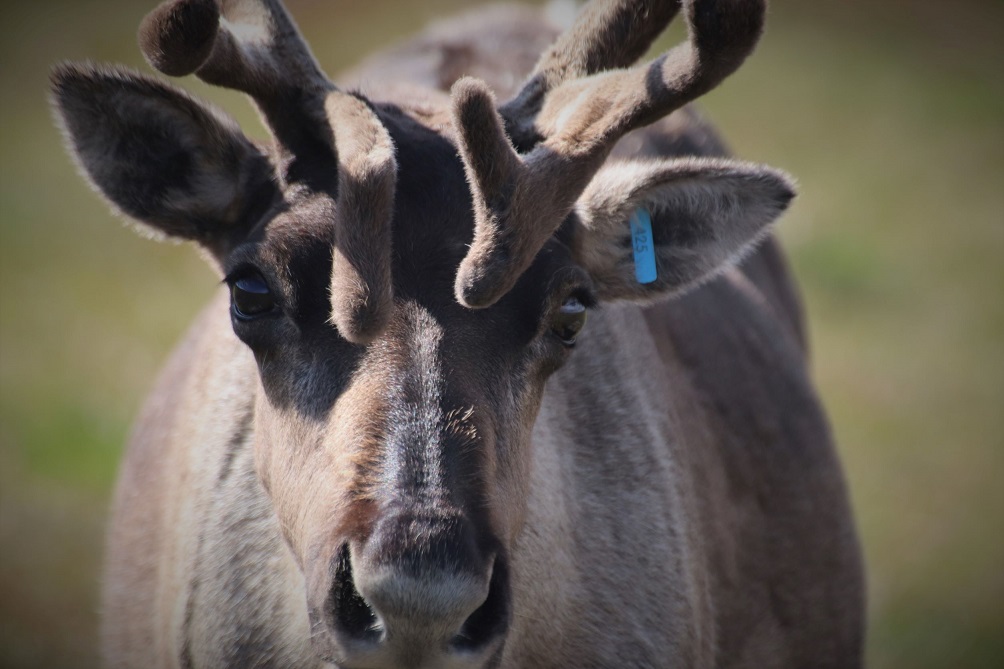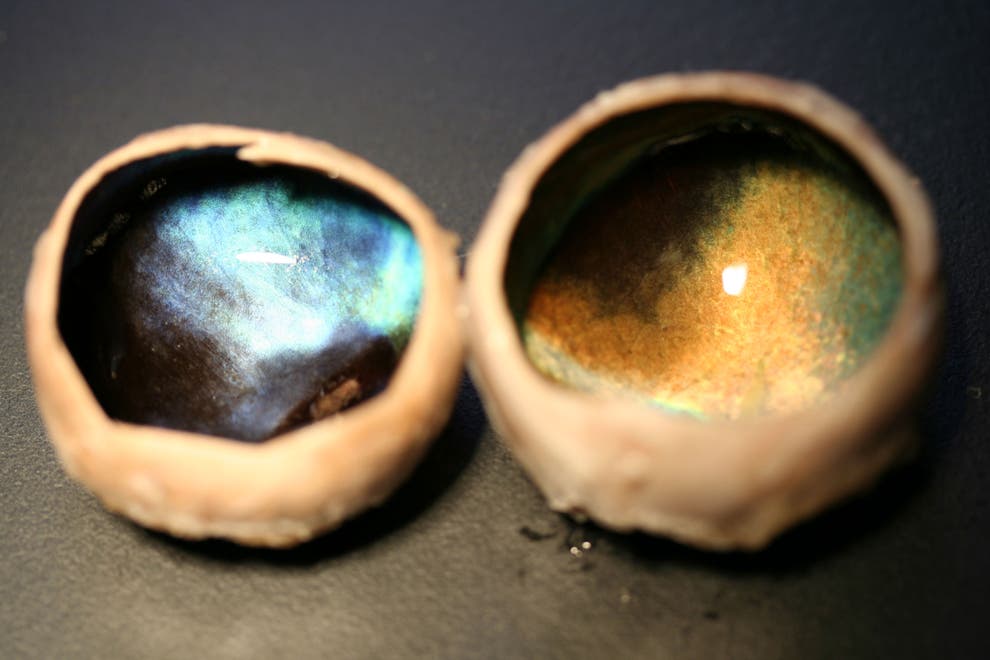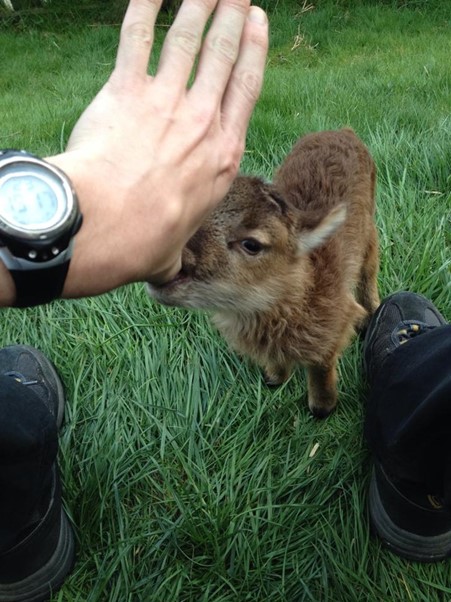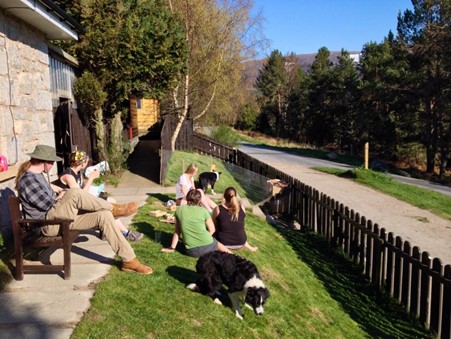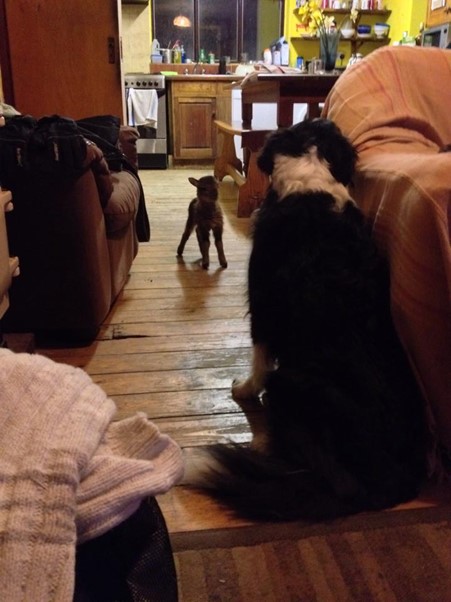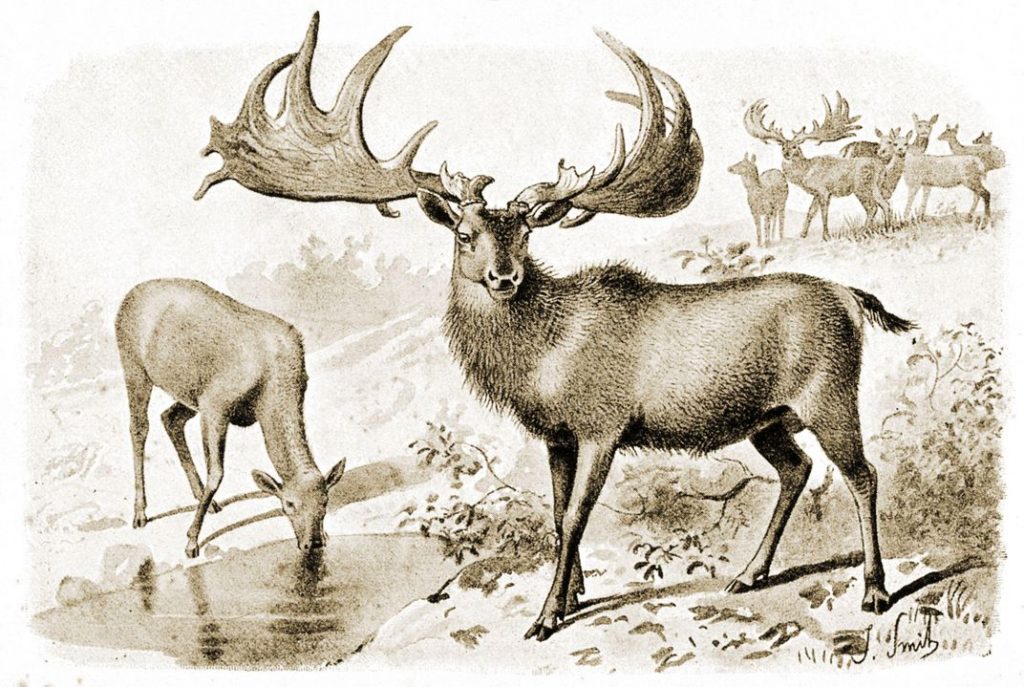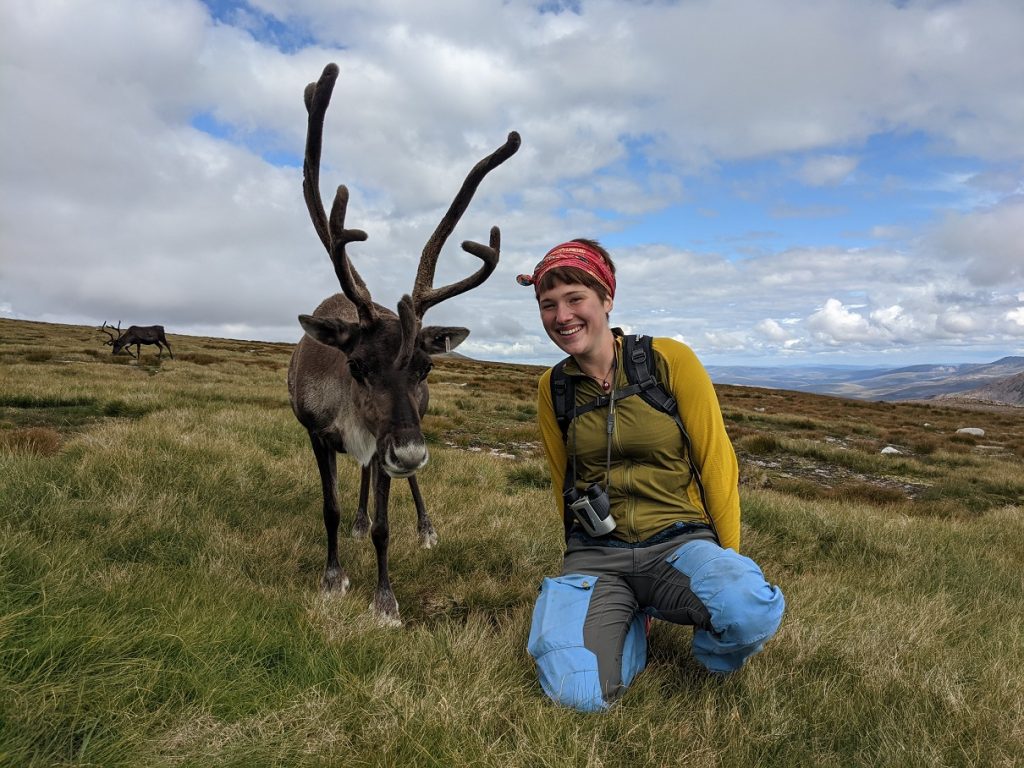Merry Christmas everyone. As you may well imagine, when you have a herd of reindeer, December is a busy time of the year. And this year has been no different. In this blog, I’ll provide a summary of what happens at the Reindeer Centre throughout December.
We’ve been having plenty of ‘Christmas Fun’ in the Paddocks and Exhibition area. This has taken place every December weekend as well as every day this past week in the build up to Christmas Day. Here we’ve had Santa Claus in his cosy, fire-lit grotto as well as arts and crafts, a special Christmas activity booklet for the kids to complete and plenty of herder talks out in the paddocks alongside the reindeer. We hope you’ve enjoyed chatting to us herders and seeing Santa!

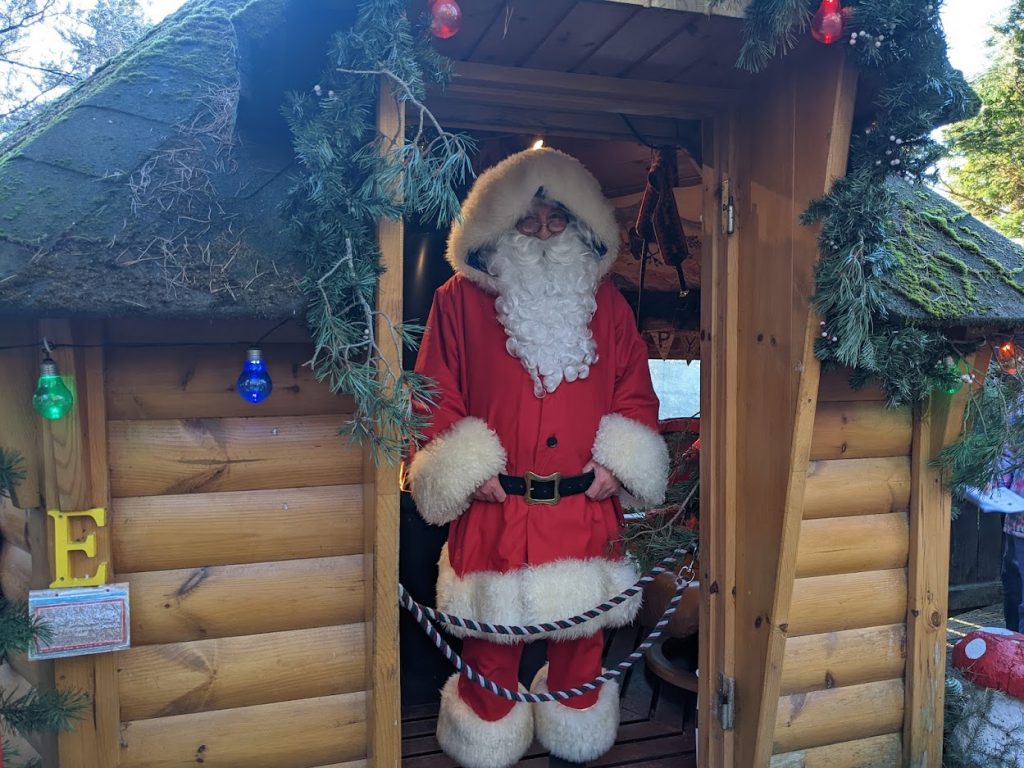
The weather hasn’t always played ball with our plans. In fact, the start of December brought some pretty wild weather. We had over 10cm of snow. The reindeer were delighted and could often be seen dancing with joy, which can be seen in the video below. However, the Ski Road leading up to the car park had to be closed on occasion due to dangerous, icy conditions and a few Hill Trips were subsequently cancelled.
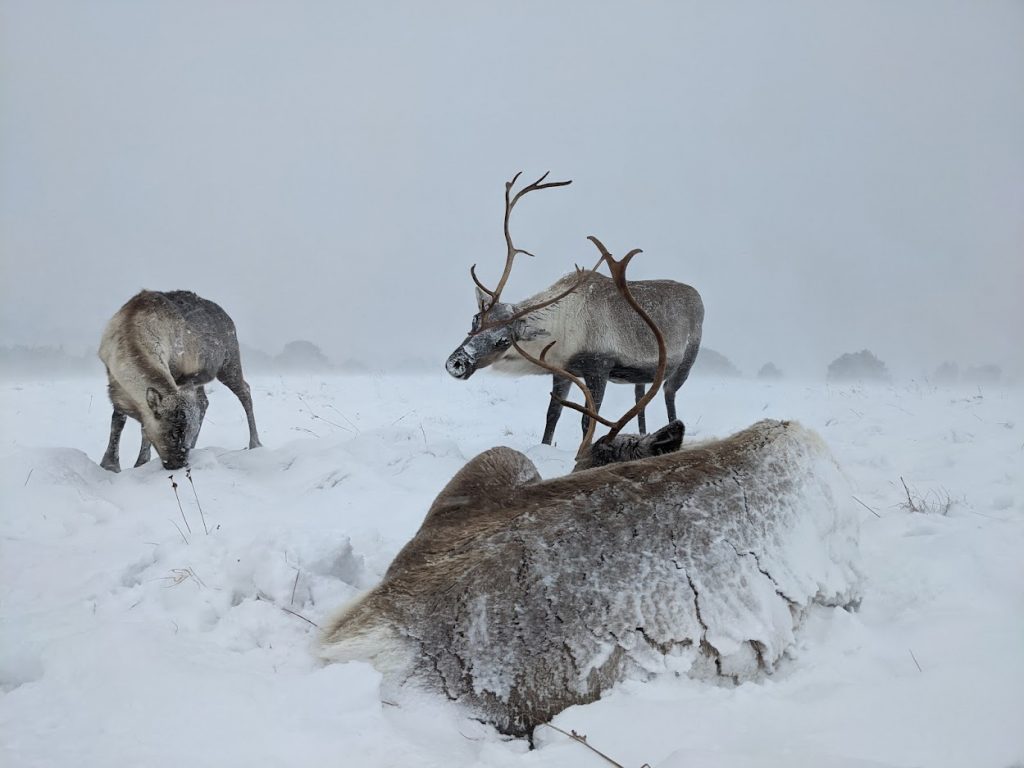
The snow melted about halfway through the month due to a mild spell of weather and we now have just a bit of frost on the ground in all areas except the very tops of the mountains. The weather didn’t put you hardy folks off visiting though and we had lots of visitors wrapping up warm and braving the elements on our hill trips. In fact, the December weekend hill trips were all booked up before December even started!
December is also the busiest month for our adoption scheme. As such we’ve been wading through seemingly never-ending torrents of incoming adoptions. All the herders have gallantly pulled long shifts of office work and about a week before Christmas Day we managed to paddle through the swell and get through the backlog of adoptions. No adoption was waiting more than a couple of days after being received so we hope that you receive your packages in a timely manner. During the busiest times, herders were writing letters whilst on tour and we recruited help from Linda and Tina who have been fantastic at writing letters for us from their homes.
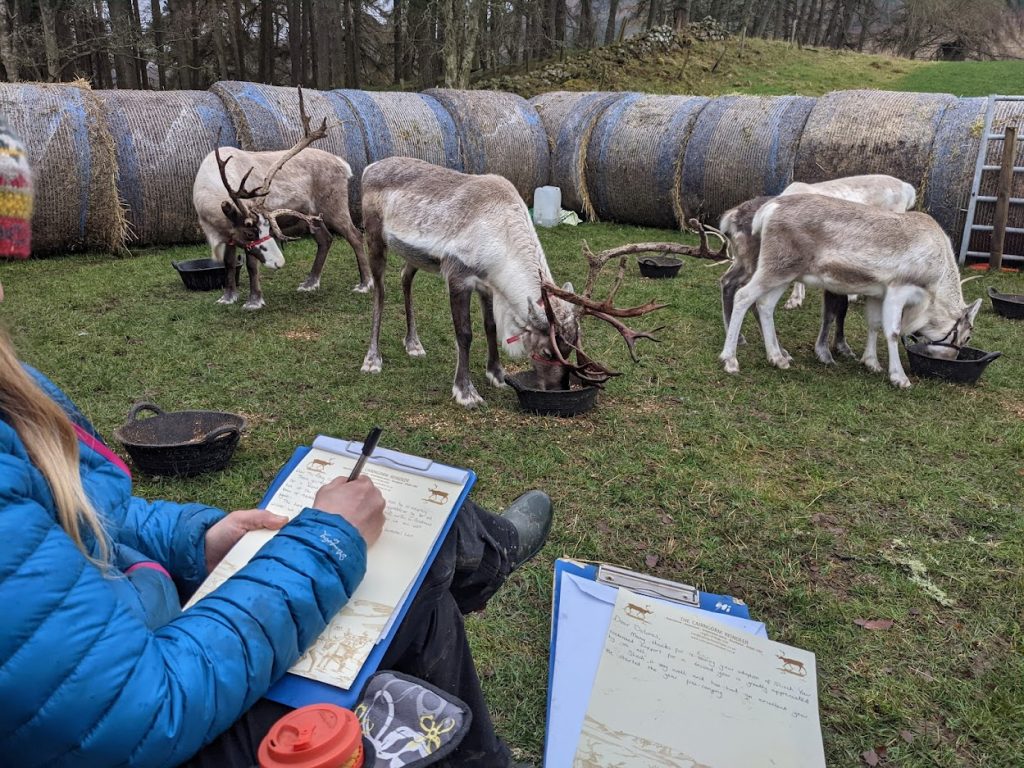
One of the other events that happens over November and December is that a selection of trained reindeer may go out on tour around the nation. Events are often relatively local, however we reached as far south as Windsor this year and went as far away as Llanelli in South Wales. Training for the reindeer occurs throughout summer and really hots up during the autumn. The reindeer may be in a display pen or participating in a sleigh procession. It varies from event to event. The team and their herders will stay at overnight bases throughout the UK, and they will travel in big lorries with lots of space which means that the reindeer will often lie down on the straw when travelling or as some of you may have seen, they may also lie down when they’re in a pen. They like to relax whenever possible. Our calves have even had a bit of exposure to Christmas events and overall, they’ve been absolute champions.

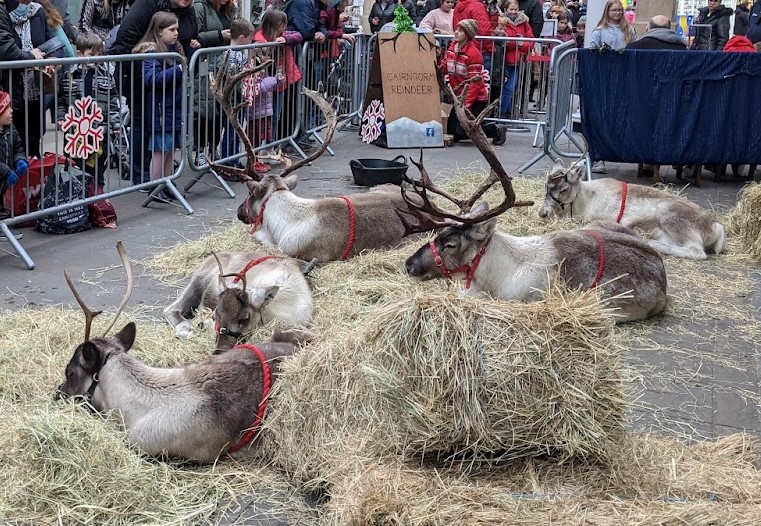
Colin D (we have two Colins!) has clocked up the most miles of all of us herders and that’s good news for the rest of us as he produces the funniest videos. Here is Colin narrating Dr Seuss’ gardening skills. Stay tuned for more of Colin’s videos in a future blog/social media posts…
We are still open as usual until the 6th of January 2022. The Centre will then close until the 12th of February, re-opening in time for the February half-term. The entire herd will soon be free-ranging either on the Cairngorms or the Cromdales, fingers crossed for another cold and snowy winter. Thank you for all our wonderful visitors, supporters, blog-readers, and adopters throughout 2021. Merry Christmas and a Happy New Year, from all the reindeer herders!
Ben

